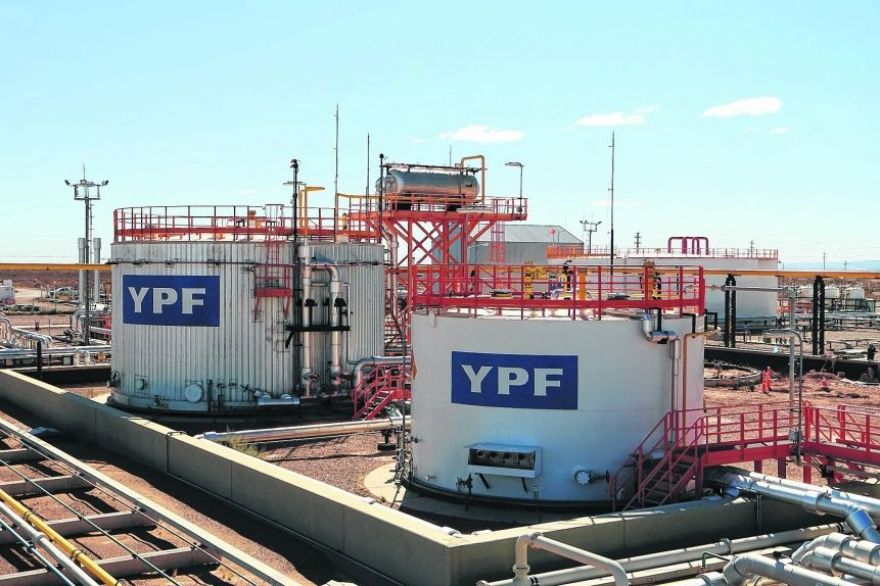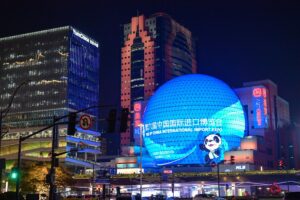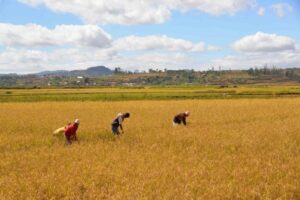
YPF and Petronas jointly announced that, after a long process of technical-economic evaluation carried out by the professional teams of both companies, it was concluded that the most advantageous location for the Argentina GNL project is the town of Sierra Grande in the Province of Río Negro. At yesterday’s meeting, the YPF board of directors unanimously approved this decision after analyzing the information presented by the technical teams and the consultant on the alternatives for the location of this initiative.
To ensure the transparency of the process, YPF decided to hire the international consultancy firm Arthur D. Little, which concluded that Río Negro shows better economic aspects for the project, even if Buenos Aires were to match the tax benefits. This project is one of the most important private initiatives in the history of Argentina, with an investment of more than 30 billion dollars that would allow the country to become the fifth LNG producer in the world.
The decision on the location of the project required thorough and exhaustive technical work, considering technical, economic, environmental, geographic, fiscal and regulatory variables.
«Sierra Grande is presented as the best option due to the shorter length of the gas pipelines needed to transport natural gas from Vaca Muerta, the greater maritime depth that reduces the need for dredging for the operation of the planned vessels, the wide availability of land and low interference with other social and economic activities, the possibility of having a dedicated port operation and the synergy with the development of local infrastructure with the Vaca Muerta Sur Pipeline project» says the company’s official statement, among other reasons. In addition, the province of Río Negro offered the regulatory and fiscal conditions necessary for the development of the project.
Sierra Grande will be the location for the Argentina LNG Project. After an extensive technical-economic evaluation process carried out by our teams together with the @Petronas It was concluded that the most suitable location is Sierra Grande in the province of Río Negro. pic.twitter.com/CbYpqgLYZu
— ypfoficial (@YPFoficial) July 31, 2024
Political disputes
The uncertainty over the location had climbed onto the national political agenda. The struggle of interests and support had been played out in the first instance in the National Congress, with the adhesion to the incentive regime for large investments (RIGI). Río Negro and the Patagonian provinces had given strong signs of support to the administration of President Javier Milei, endorsing the regulations.
Specifically, the leader of La Libertad Avanza had declined the chances for the Buenos Aires port city of Bahía Blanca, based on the rejection that the Bases law had provoked among national legislators of Unión por la Patria, the political segment that identifies the governor of Buenos Aires, Axel Kicillof, who, given the adverse context, had promoted his own regulatory regime as a signal to the directors of the two companies.
Before YPF’s official announcement, Neuquén Governor Rolando Figueroa had anticipated that “today could be a great day,” referring to the definition of the location of the export complex, a network of gas pipelines between Vaca Muerta and the Argentine Atlantic coast, plus a liquefaction plant, which could bring about a leap in gas production of a magnitude the country has never seen before.
The barrage of endorsements also included the governor of the province of Santa Cruz, Claudio Vidal, and the union of oil workers of Neuquén. In the previous days, there was a long list of endorsements that included mayors, business chambers and representatives of different political backgrounds. The government of Alberto Weretilneck from Río Negro had early on promoted support for the RIGI locally.
YPF and Petronas select Río Negro as location for Argentina LNG project
The LNG project
Led by state-owned company YPF and Malaysian oil company Petronas, the Argentina LNG project seeks to liquefy gas for export to world markets, covering gas production in Vaca Muerta, its transportation to the processing terminal and its industrialization, with a final production capacity of 30 million tons per year. The next steps will be the search for potential buyers of the gas worldwide and the financing of the entire project with investors and international banks.
Abang Yusuf, Senior Vice President of LNG at Petronas, said the plan is to start LNG exports in 2027 using the first ship with a capacity of up to 2 MTPA. Subsequently, Petronas and YPF plan to expand production capacity to 9 MTPA with three floating LNG facilities off the coast of Argentina. The agreement between Petronas and YPF for a land-based plant remains in force. This project, called the GNL Argentina Project, seeks to attract other investors to consolidate the LNG industry in the country and take advantage of the gas resources of Vaca Muerta.
Petronas intends to increase its share of the global LNG market to 10%. Although it has not set a specific date, it is considering options for export plants in Canada in collaboration with GNL Canada, while continuing to work with YPF in Argentina.
The project could generate revenues of up to 15 billion dollars annually by 2030-2032 with the addition of onshore modules, which would consolidate Punta Colorada as a strategic hub in the energy industry. This town, part of the Sierra Grande municipality, has mining potential and its coastal characteristics facilitate transport by sea, making it an ideal location for the project.
The development of the project involves several challenges, such as defining the technical characteristics of the executive project, partnering with the country’s main gas producers and negotiating financing. YPF and Petronas will have to agree on an executive design and a partnership scheme with other producing companies to finance a megaproject that exceeds YPF’s credit capacity.
Argentina LNG It is one of the most important private initiatives in the history of Argentina, with an investment of more than 30 billion dollars and would allow Argentina to position itself as the fifth largest producer of LNG in the world.
He is a student at the Faculty of Law of the National University of Cuyo, Mendoza, Argentina. He is a member of the Faculty’s Research Group and of the Study Group on India and Southeast Asia of the National University of Rosario. He also completed the Diploma in Law and Digital State 4.0. He is an intern at SHEN, a business consultant with Asia, and an editor at ReporteAsia.
Source: https://reporteasia.com/negocios/energia/2024/08/01/apuesta-ypf-petronas-rio-negro-epicentro-megaproyecto-gnl/

